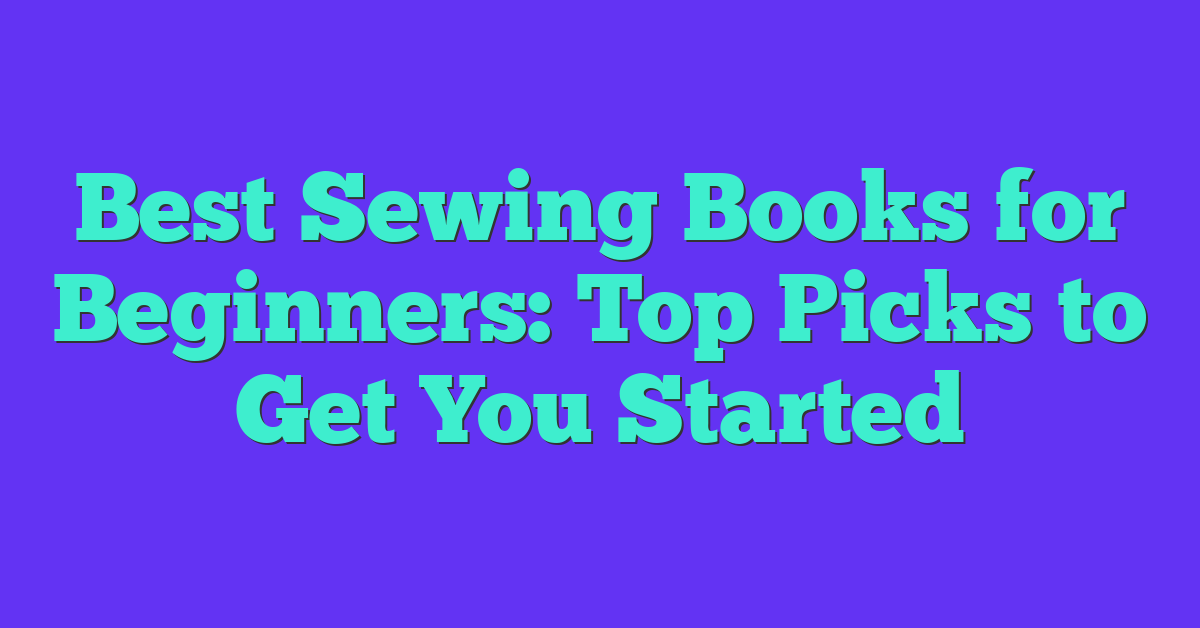As a beginner in the world of sewing, it can be overwhelming to know where to start. With so many techniques, tools, and materials to learn about, it can be difficult to know which resources to trust. Fortunately, there are many great sewing books for beginners that can help you get started on your sewing journey.
Whether you’re looking to learn the basics of sewing or you’re ready to take your skills to the next level, there is a sewing book out there for you. From step-by-step guides to detailed tutorials on specific techniques, these books can help you improve your skills and build your confidence as a sewer.
When choosing a sewing book for beginners, it’s important to consider your own skill level and the type of projects you’re interested in. Some books are geared towards absolute beginners and focus on the basics of sewing, while others are more advanced and cover more complex techniques. By choosing a book that matches your skill level and interests, you can ensure that you get the most out of your sewing education.
Key Takeaways
- There are many great sewing books for beginners that can help you get started on your sewing journey
- It’s important to consider your own skill level and the type of projects you’re interested in when choosing a sewing book
- By choosing a book that matches your skill level and interests, you can ensure that you get the most out of your sewing education.
Understanding the Basics of Sewing
As a beginner, it’s important to understand the basics of sewing before diving into any project. In this section, I’ll cover the sewing terminology, sewing tools and equipment, and types of seams that you’ll need to know before starting your first project.
Sewing Terminology
Before you start sewing, you’ll need to know some basic sewing terminology. Here are a few important terms to get you started:
- Bobbin: A small spool that holds the lower thread in the sewing machine.
- Presser Foot: A mechanism that holds the fabric in place while you sew.
- Stitch Length: The distance between each stitch.
- Seam Allowance: The amount of fabric between the seam line and the edge of the fabric.
Sewing Tools and Equipment
To start sewing, you’ll need a few essential tools and equipment. Here are some of the most important ones:
| Tool/Equipment | Description |
|---|---|
| Sewing Machine | A machine that stitches fabric together. |
| Scissors | Used to cut fabric. |
| Pins | Used to hold fabric in place while sewing. |
| Seam Ripper | Used to remove stitches. |
Types of Seams
There are many different types of seams that you can use in your sewing projects. Here are a few of the most common ones:
- Plain Seam: A basic seam that joins two pieces of fabric together with a straight stitch.
- French Seam: A seam that encloses the raw edges of the fabric for a clean finish.
- Zigzag Seam: A seam that uses a zigzag stitch to prevent the fabric from fraying.
By understanding these sewing basics, you’ll be able to confidently start your first sewing project. Remember to take your time and practice each technique before moving on to more complex projects.
Getting Started with Your First Sewing Project
As a beginner, starting your first sewing project can be intimidating. However, with the right guidance, you can create something beautiful and useful. Here are some tips to help you get started.
Choosing the Right Fabric
Choosing the right fabric is crucial for the success of your project. When selecting fabric, consider the weight, texture, and drape. For beginners, it’s best to start with cotton or cotton blends as they are easy to work with and come in a variety of colors and prints. Avoid slippery or stretchy fabrics as they can be more difficult to handle.
Reading and Understanding Patterns
Patterns are the blueprint for your sewing project. They provide instructions on how to cut and sew the fabric to create the desired item. As a beginner, it’s important to choose a pattern that matches your skill level. Look for patterns labeled “easy” or “beginner.” Before starting, read through the instructions carefully and make sure you understand each step. If you’re unsure about a particular instruction, don’t hesitate to ask for help.
Setting Up Your Sewing Space
Having a dedicated sewing space can make your sewing projects more enjoyable. Find a space in your home where you can set up your sewing machine and supplies. Make sure you have good lighting and a comfortable chair. Keep your sewing supplies organized and within reach. This will make it easier to start and finish your projects.
Remember, starting a sewing project can be overwhelming, but with the right tools and guidance, you can create something beautiful and useful. Start with a simple project, like a pillow or tote bag, and work your way up to more complex projects. With practice, your sewing skills will improve, and you’ll be able to tackle more challenging projects.
Mastering Sewing Techniques
As a beginner, mastering sewing techniques can seem daunting, but with the right resources, it can be a fun and rewarding experience. In this section, I will discuss some of the best sewing books for beginners that will help you master essential sewing techniques.
Stitching and Fitting Techniques
One of the most important techniques to master is stitching. The “Complete Book of Sewing Techniques” by Wendy Gardiner is an excellent resource for beginners. It covers over 30 essential sewing techniques, including hand and machine stitching, hems, sleeves, and more. The book is easy to understand and includes helpful photographs.
Another important technique to master is fitting. “Sewing for the Absolute Beginner” by Caroline Smith is a great resource for learning how to fit patterns to your body. The book covers how to take accurate measurements, adjust patterns, and create muslins to ensure a perfect fit.
Advanced Sewing Techniques
Once you have mastered the basics, it’s time to move on to more advanced sewing techniques. “The Reader’s Digest Complete Guide to Sewing” is an excellent reference book that covers pretty much every technique you’ll run into as a beginner and intermediate sewer. It includes information on pleats, bias strips, and interfacing, among other things.
If you’re looking to take your sewing skills to the next level, “The Sewing Book” by Alison Smith is a great resource. It covers over 300 step-by-step techniques, including advanced techniques like tailoring and couture sewing.
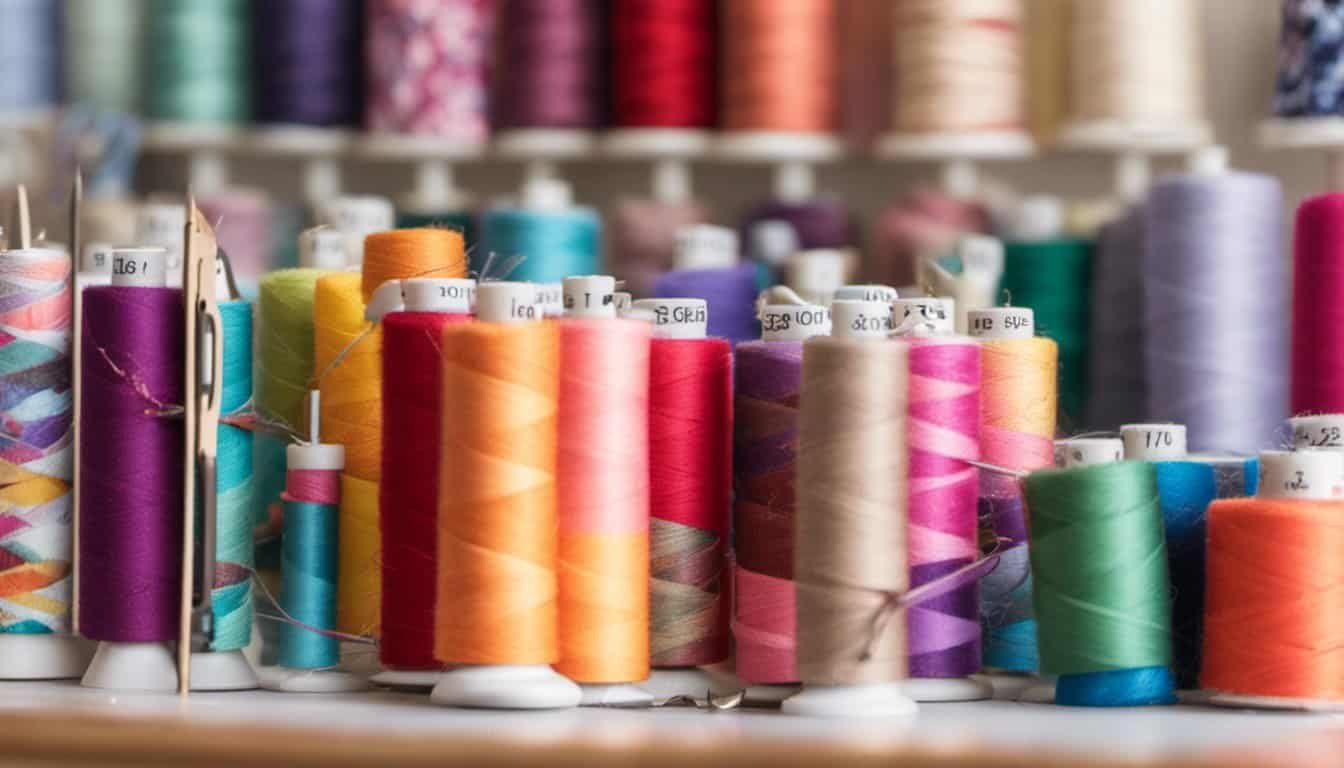
In conclusion, mastering sewing techniques takes time and practice, but with the right resources, it can be an enjoyable experience. The books mentioned in this section are excellent resources for beginners looking to improve their stitching and fitting skills, as well as those looking to take their sewing skills to the next level with advanced techniques.
Exploring Different Types of Sewing
As a beginner, it can be overwhelming to decide what type of sewing you want to focus on. Here are a few different types of sewing to consider:
Garment Sewing
Garment sewing involves making clothing items such as dresses, skirts, pants, and jackets. It can be a bit more challenging than other types of sewing since you need to ensure the fit is just right. However, with practice and patience, you can create beautiful and unique pieces for your wardrobe.
Some beginner-friendly garment sewing books to check out include “The Colette Sewing Handbook” and “Sewing Clothes for Beginners” by Wendy Ward. These books provide step-by-step instructions for creating simple garments and offer tips for adjusting patterns to fit your body.
Home Decor Sewing
« Best Sewing Machines for Beginners and Professionals
Best Project Runway Sewing Machines for Fashionable Creations »
If you’re interested in sprucing up your living space, home decor sewing might be for you. This type of sewing involves making items such as cushions, pillows, curtains, and even bedding. It’s a great way to add a personal touch to your home and save money on store-bought decor.
For beginner-friendly home decor sewing books, check out “Sewing Home Decor” by Singer. This book covers a variety of projects, including curtains, table runners, and even lampshades.
Sewing Gifts and Accessories
Sewing gifts and accessories can be a fun and rewarding way to practice your sewing skills. Plus, you can create personalized gifts for friends and family that they’ll cherish for years to come. Some ideas for sewing gifts and accessories include tote bags, makeup bags, and even activewear.
For beginner-friendly sewing gift and accessory books, check out “Sew Gifts” by That Patchwork Place. This book includes a variety of projects, including aprons, scarves, and even a yoga mat bag.
No matter what type of sewing you choose to focus on, remember to start with simple projects and practice regularly. With time and patience, you’ll be creating beautiful and functional pieces in no time.
Sewing Books for Beginners
As a beginner in sewing, it can be overwhelming to choose the right sewing book to help you learn. There are many sewing books for beginners out there, each with its own unique approach to teaching the craft. In this section, I will highlight some of the best sewing books for beginners and categorize them based on their content.
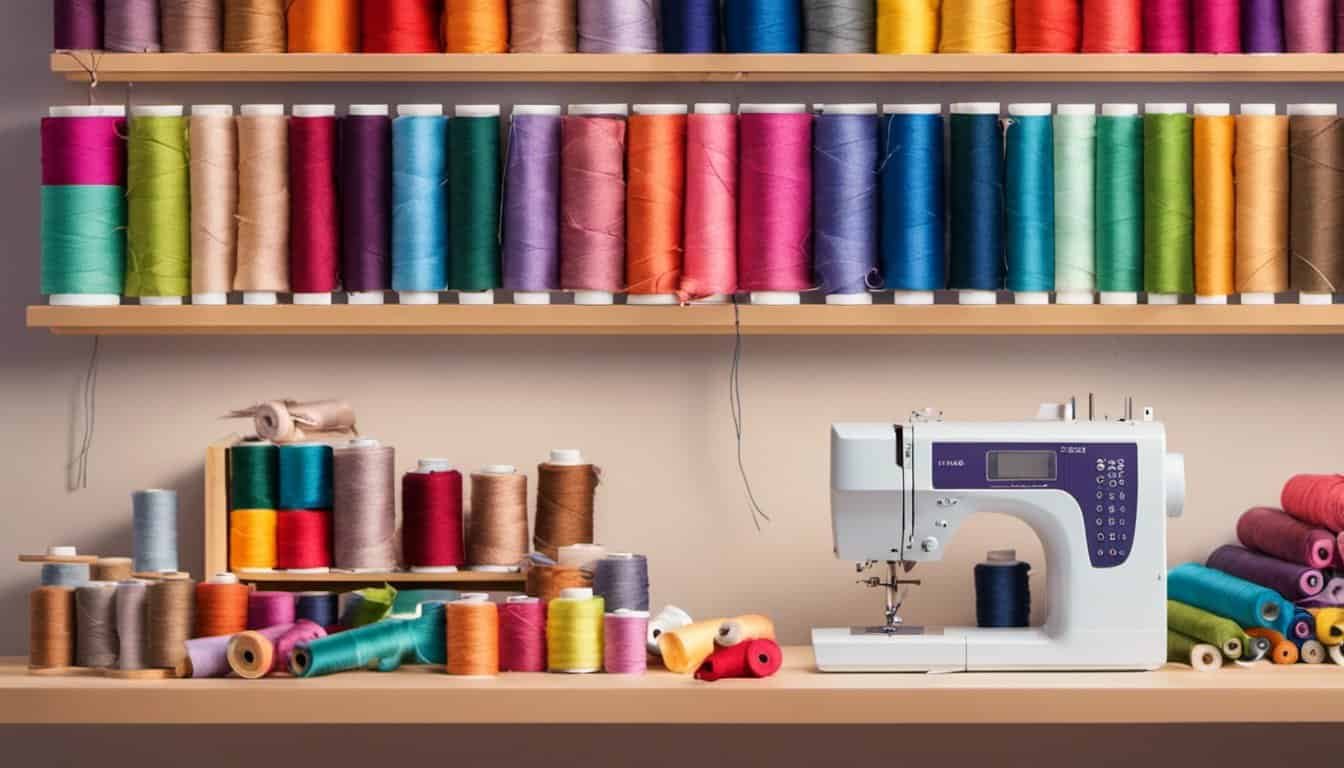
Project-Based Sewing Books
Project-based sewing books are perfect for beginners who want to learn by doing. These books usually include step-by-step instructions for creating a variety of projects, from simple to complex. Some of the best project-based sewing books for beginners include:
- Singer: The Complete Photo Guide to Sewing by Nancy Langdon and Singer Sewing Company
- How to Start Sewing by Assembil
- Tilly and the Buttons: Love at First Stitch by Tilly Walnes
These books are great for beginners because they start with the basics and gradually increase in difficulty. They also include helpful tips and tricks for each project, making it easier for beginners to learn.
Reference Sewing Books
Reference sewing books are perfect for beginners who want to learn the fundamentals of sewing. These books usually include detailed explanations of sewing techniques and terminology, making them a great resource for beginners who want to learn at their own pace. Some of the best reference sewing books for beginners include:
- The Reader’s Digest Complete Guide to Sewing by Reader’s Digest
- Fast Fit by Sandra Betzina
- The Act of Sewing by Sonya Philip
These books are great for beginners because they provide a comprehensive overview of sewing techniques and terminology. They also include helpful illustrations and diagrams to make learning easier.
Fitting and Design Sewing Books
Fitting and design sewing books are perfect for beginners who want to learn how to fit and design their own garments. These books usually include detailed explanations of fitting and design techniques, making them a great resource for beginners who want to take their sewing to the next level. Some of the best fitting and design sewing books for beginners include:
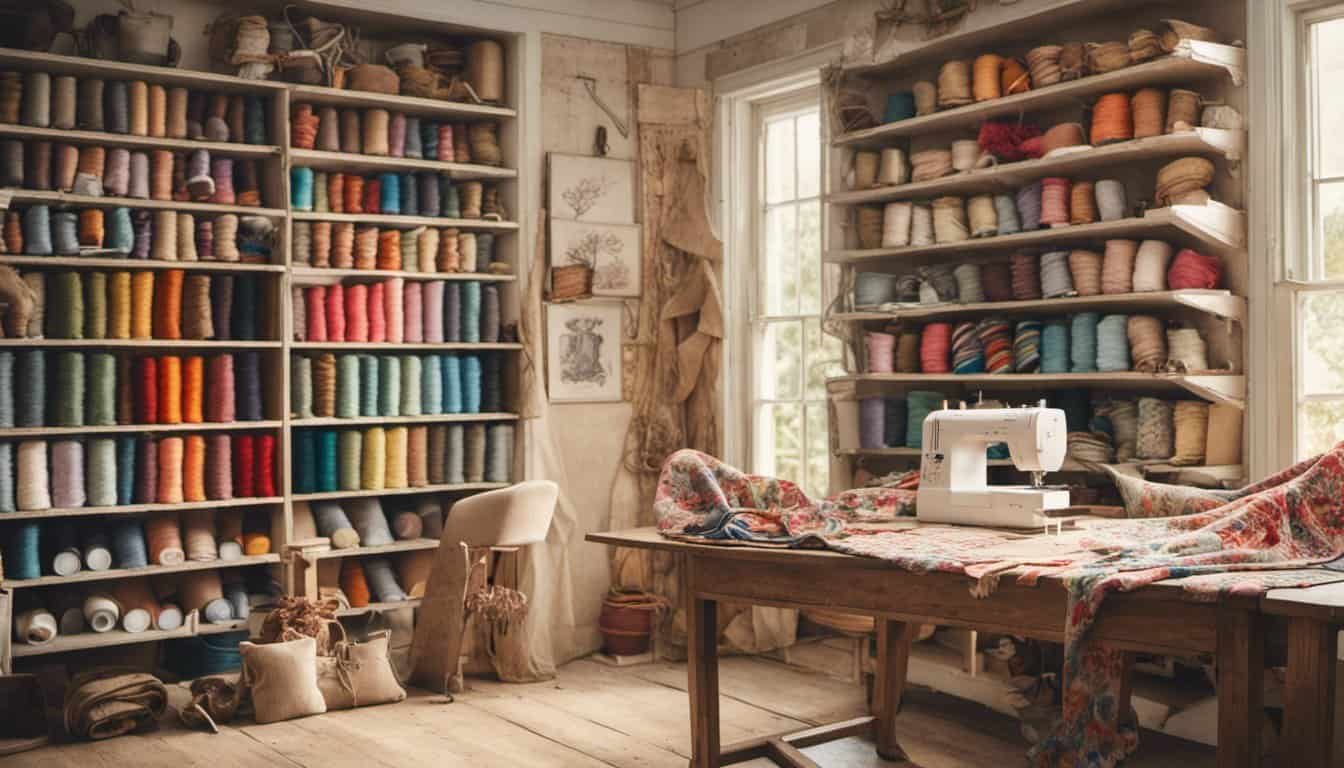
- The Colette Sewing Handbook by Sarai Mitnick
- The New Complete Guide to Sewing by Reader’s Digest
- School of Sewing by Shea Henderson
- Sew Beautiful: Make Stylish Handmade Clothing with Simple Stitch-and-Wear Patterns by Kennis Wong
- More Fabric Savvy by Sandra Betzina
- The Fitting Book by Alison Smith
These books are great for beginners who want to learn how to fit and design their own garments. They provide detailed explanations of fitting and design techniques, making it easier for beginners to learn. They also include helpful illustrations and diagrams to make learning easier.
In conclusion, there are many great sewing books for beginners out there. Whether you prefer project-based, reference, or fitting and design sewing books, there is a book out there for you. By choosing the right sewing book for your needs, you can get started on your sewing journey with confidence.
Improving Your Sewing Skills
As a beginner, you may feel overwhelmed by the number of techniques and skills you need to master in sewing. However, with practice and guidance, you can improve your sewing skills and take your projects to the next level. Here are some tips to help you improve your sewing skills:
Sewing Classes and Workshops
Attending sewing classes and workshops is an excellent way to learn new techniques and improve your sewing skills. You can find sewing classes and workshops in your local community, sewing schools, and online. Sewing classes and workshops offer a structured learning environment where you can learn from experienced instructors and interact with other sewists.
If you’re new to sewing, consider taking a sewing 101 class to learn the basics. If you’re looking to improve your skills, look for classes that focus on specific techniques, such as garment construction, quilting, or embroidery. You can also find classes that teach you how to use specific sewing machines or tools.
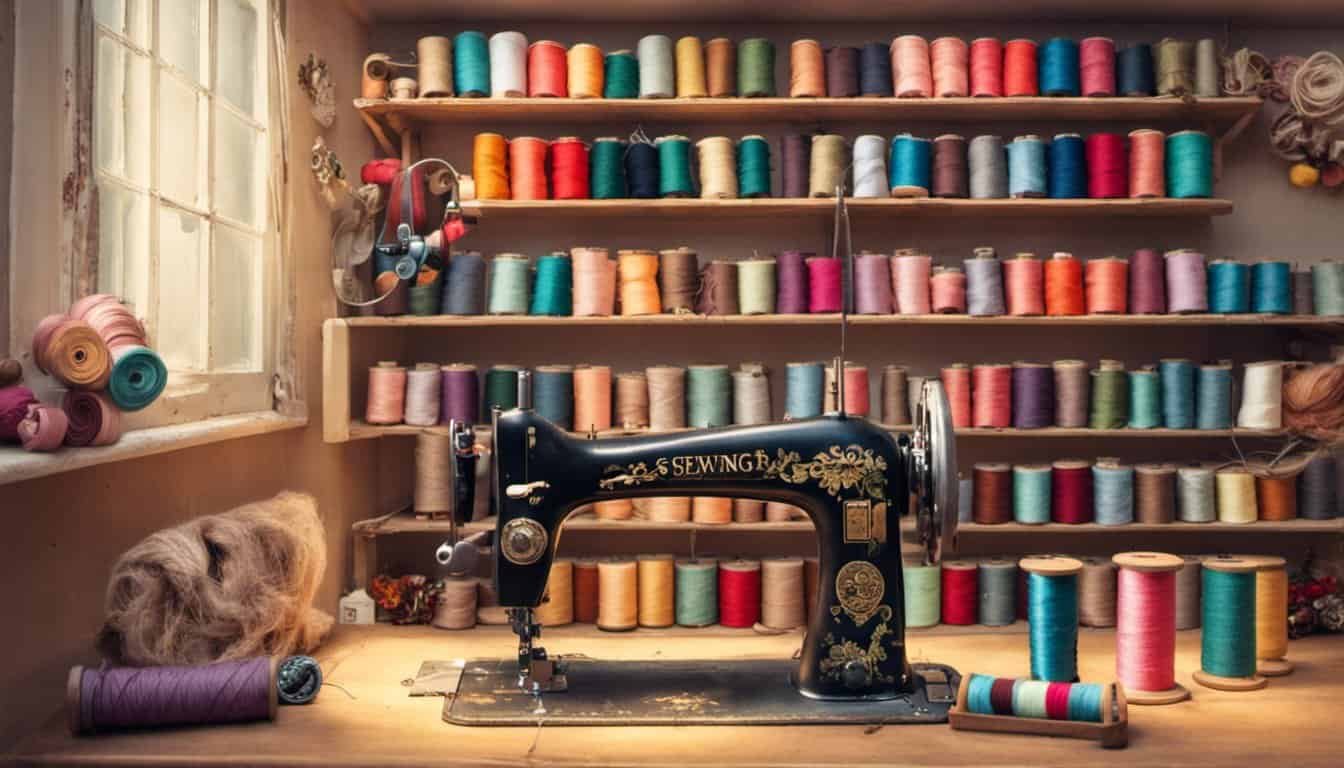
Online Sewing Resources
The internet is a treasure trove of information for sewists of all skill levels. There are many online resources available that can help you learn new techniques, find inspiration, and connect with other sewists. Here are some online sewing resources that you may find helpful:
Sewing blogs: There are many sewing blogs out there that offer tutorials, tips, and inspiration for sewists. Some popular sewing blogs include Tilly and the Buttons, Colette Patterns, and Sewaholic.
YouTube: YouTube is an excellent resource for visual learners. You can find many sewing tutorials and demonstrations on YouTube, from basic techniques to advanced projects.
Online sewing communities: There are many online sewing communities where you can connect with other sewists, ask for advice, and share your projects. Some popular online sewing communities include Reddit’s /r/sewing, PatternReview, and Sewing Pattern Review.
Sewing apps: There are many sewing apps available that can help you with everything from measuring and cutting fabric to tracking your sewing projects. Some popular sewing apps include Sewing Kit, Sewing Patterns by Sew Aldo, and Sewing Patterns.
In conclusion, there are many ways to improve your sewing skills, from taking sewing classes and workshops to exploring online resources. With practice and guidance, you can become a skilled sewist and take your projects to the next level.
Sewing Machine Maintenance and Repair
As a beginner, it’s essential to know how to maintain and repair your sewing machine. Proper maintenance can help your machine last longer and work more efficiently. Here are a few tips to help you keep your sewing machine in tip-top shape:
Clean your machine regularly: Dust, lint, and thread can accumulate in your machine over time, causing it to work poorly. Use a soft brush or a lint roller to remove any debris from your machine regularly.
Oil your machine: Sewing machines need to be oiled regularly to keep them running smoothly. Check your machine’s manual to see where and how much oil to use.
Check your needles: Bent or dull needles can cause your machine to skip stitches or break threads. Replace your needle regularly, and make sure you’re using the correct type and size for your fabric.
Tighten loose screws: Over time, screws can loosen, causing your machine to vibrate or make noise. Check your machine’s manual to see which screws need to be tightened and how to do it.
If your sewing machine does need repairs, don’t be afraid to take it to a professional. Trying to fix it yourself can cause more damage and end up costing you more in the long run.
There are also many resources available to help you learn how to repair and maintain your sewing machine. The book “The Complete Handbook of Sewing Machine Repair” by Howard Hutchison is an excellent resource for learning how to repair and maintain your sewing machine.

Remember, taking care of your sewing machine is essential for a successful sewing journey.
Building Your Sewing Library
As a beginner in sewing, building a sewing library is essential to gain knowledge and expertise in the craft. A sewing library is a collection of resource and reference books that can help you in your sewing projects. In this section, I will share my simple framework for building a sewing library and suggest some of the best sewing books for beginners.
Types of Sewing Books to Consider
There are three types of sewing books that are worth having in your sewing library: reference books, handbook, and the sewing machine classroom. Reference books provide detailed information about sewing techniques, tools, and materials. Handbook books are comprehensive guides to sewing, covering everything from the basics to more advanced techniques. The sewing machine classroom books are focused on specific sewing machines, providing tips and tricks for using them effectively.
Choosing the Right Sewing Books
When selecting sewing books for your library, it’s essential to consider your level of expertise and the type of sewing projects you want to undertake. For beginners, it’s best to start with books that cover the basics of sewing, such as threading a needle, selecting fabric, and using a sewing machine. As you progress, you can move on to more advanced topics, like pattern drafting and tailoring.
Recommended Sewing Books for Beginners
Here are some of the best sewing books for beginners that I recommend adding to your sewing library:

- The Colette Sewing Handbook by Sarai Mitnick
- Sewing School: 21 Sewing Projects Kids Will Love to Make by Andria Lisle and Amie Petronis Plumley
- The Sewing Book: An Encyclopedic Resource of Step-by-Step Techniques by Alison Smith
- The Complete Photo Guide to Sewing by Singer
- The Sewing Bible: A Modern Manual of Practical and Decorative Sewing Techniques by Ruth Singer
By selecting a few titles from these three categories, you’ll have a well-rounded, inspiring sewing library that will help you in your sewing projects.
Frequently Asked Questions
What are some recommended sewing books for beginners?
There are many great sewing books for beginners, but some of the most recommended ones include “First Time Sewing” by Becky Hanson, “Sewing School: 21 Sewing Projects Kids Will Love to Make” by Amie Petronis Plumley and Andria Lisle, and “The Sewing Book: Over 300 Step-by-Step Techniques” by Alison Smith.
What are some free sewing books available for beginners?
If you’re looking for free sewing books, you can check out “Joann’s Field Guide to Basic Sewing” or “Sewing for Beginners: A Step-by-Step Guide to Hand and Machine Sewing” by Wendy Gardiner. Both are great resources for beginners and can be downloaded for free.
Is the Vogue Sewing Book a good resource for beginners?
While the Vogue Sewing Book is a comprehensive resource for sewing, it may not be the best option for beginners. The book assumes some prior knowledge of sewing techniques and can be overwhelming for those who are just starting out.
What are some beginner-friendly sewing machine books?
If you’re looking for a beginner-friendly sewing machine book, “Sewing Machine Basics: A Step-by-Step Course for First-Time Stitchers” by Jane Bolsover is a great option. It covers all the basics of using a sewing machine and includes easy-to-follow instructions.

What is the best book to learn how to sew clothes?
If you’re interested in learning how to sew clothes, “The Complete Photo Guide to Sewing: Revised and Updated” by Christine Haynes is a great resource. It covers everything from choosing fabric to fitting garments and includes step-by-step instructions for a variety of clothing projects.
What are some essential items a beginner should get to start sewing?
Some essential items for beginners include a sewing machine, fabric, thread, scissors, pins, a seam ripper, and a measuring tape. It’s also helpful to have a good reference book or guide to help you learn basic techniques and troubleshoot any issues that arise.


